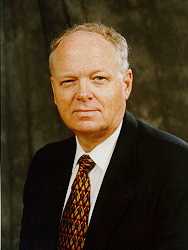|
Performance Practice For more information about Dr. Anderson, visit his faculty web site. Or you may contact him via email. |
Introduction Renaissance Baroque Classical Romantic
|
Dramatic change to individualism and the interpretive subjectivity of the performer. Complexity of music led to need of virtuoso conductor as "re-creator" and one to sort our relationships of what should be in the musical foreground, the middle ground, or the background (musical perspective); has a much more important task to influence the shaping of phrases. |
Use of Voices and Instruments
-
Large choruses now common; some gigantic.
-
Singers may outnumber instrumentalists.
-
Vocal style is more soloistic in nature and demands mature sound with power adequate for climactic points in the music.
Notation
-
Composers generally very specific of what they wanted; most notational elements currently in use were used during this period.
-
Editions of old music from this period are often heavily edited with expression marks that are inappropriate.
Ornamentation & Improvisation
-
Expressive diminuendo from the dissonance to resolution is still part of the performance of the appoggiatura.
-
Trills now usually begin on the main note.
Tempo
-
Beethoven was one of first to suggest using the metronome (includes markings for his first eight symphonies, but was reluctant to give them in his last compositional period.)
-
Brahms preferred verbal indications to numerical ones.
-
Wagner maintained that correct tempi come from a thorough understanding of the score.
-
"Tempo modification" Two schools:
a. Rigid objectivity, held by Mendelssohn
b. Unwarranted liberty, championed by Wagner -
Rubato: "important part of expression in late Romantic music."
a. Classical rubato affected only the melody, while the accompaniment remained constant.
b. Romantic (expressive) rubato affected both melody & accompaniment. -
Wagner's instructions about tempo:
a. Tempo modification is inherent in this style.
b. Best way to determine tempo is to sing parts, even instrumental parts!
c. True adagio can not be too slow.
Phrasing, Articulation, Dynamics
-
Regular phrase groups often give way to long irregular groupings.
-
Beethoven was one of first to use signs for crescendi and decrescendi; also uses < > to show exact point of the climax of a phrase.
-
Extremes of dynamics found: e.g.: "ppppp" in Verdi's Don Carlo.
| If you would like to be added to the TSMP Email Mailing List and receive periodic notifications of new articles and updates to this website, then please email TSMP.
The Texas School Music
Project is a source for ideas and information
concerning pedagogical
practices in the music classroom or rehearsal hall. The TSMP is a service provided to
all music specialists by the faculty
of
the Department of Music
at Stephen F. Austin State University. Copyright ? 2002, Department of Music at Stephen F. Austin State University |
